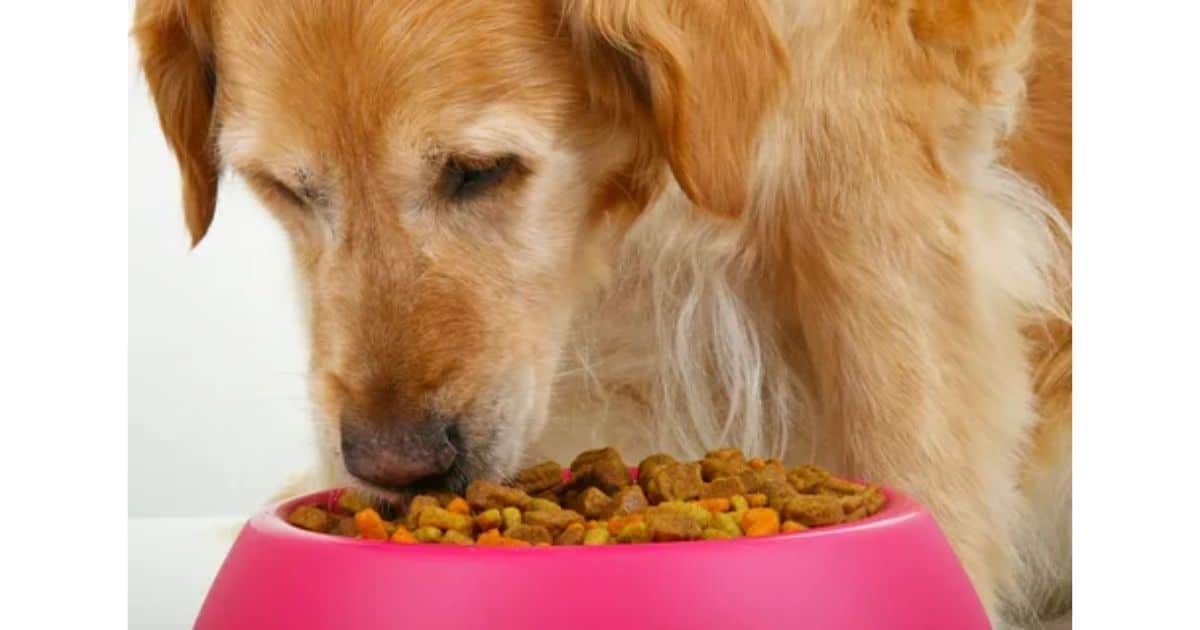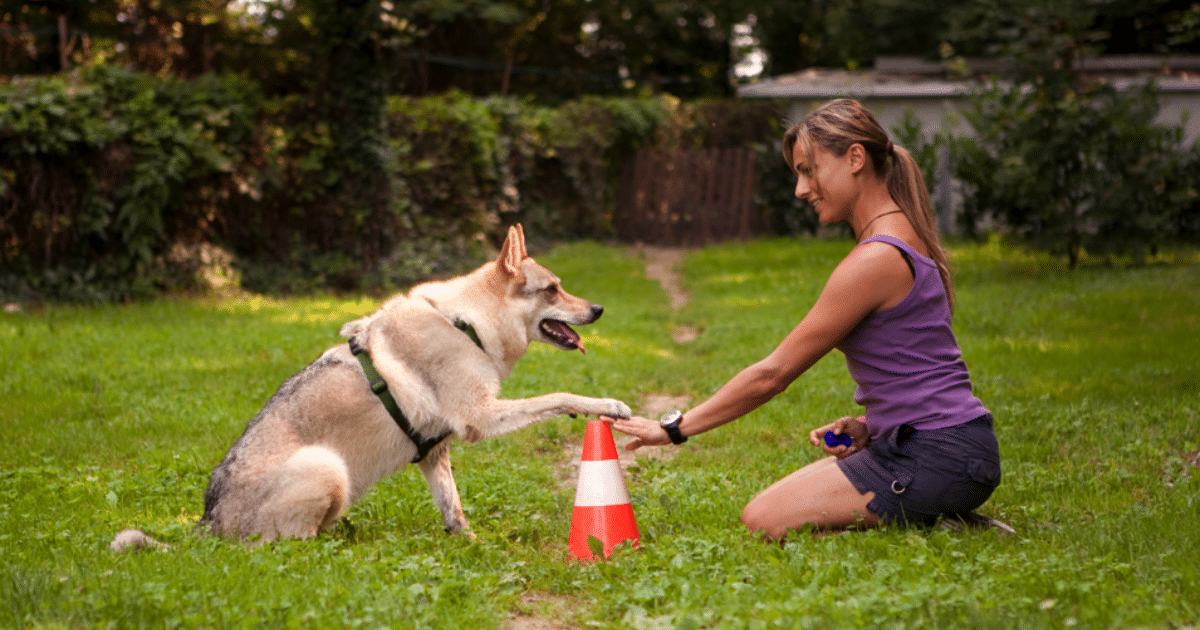Ever caught a glimpse of a dog trainer with what looks like a mouthful of kibble? You’re not alone! This quirky technique has piqued the curiosity of many dog owners and aspiring trainers alike.
In this deep dive, we’ll uncover the method behind the madness and explore why some of the most successful dog trainers swear by this mouth-watering approach. So, grab a treat (for yourself or your furry friend) and let’s sink our teeth into this fascinating topic!
4 Mouth-Watering Reasons Why Dog Trainers Put Treats in Their Mouth
You might be wondering, “Why on earth would anyone want to stuff their cheeks like a hamster during a training session?” Well, it turns out there are some pretty compelling reasons behind this unconventional practice. Let’s break down the top four reasons why dog trainers put treats in their mouth:
1. Quick and Easy Access
Imagine you’re teaching your dog to sit. You give the command, and your pup’s bottom hits the floor faster than you can blink. Now, fumbling with a treat pouch or digging into your pocket could mean missing that crucial moment of reinforcement. This is where the mouth-holding technique shines.
By keeping treats in their mouth, trainers can deliver rewards with lightning speed. It’s like having a treat dispenser built right into your face! This rapid-fire reward system is especially crucial when working on precision behaviors or with easily distracted dogs.
MORE POST: Can Dogs Have Oatmeal Cream Pies?
Case Study: Speedy Sit Success Trainer Sarah was working with Max, an energetic Labrador with the attention span of a goldfish. Using the mouth-holding technique, Sarah was able to reward Max’s sits within a fraction of a second. After just one 15-minute session, Max’s sit-on-command improved by 80% compared to previous pouch-based training attempts.
2. Hands-Free Handling
Dog training often requires a delicate dance of leash control, hand signals, and perfect timing. By stashing treats in their mouth, trainers free up their hands for other important tasks. This can be a game-changer when working with:
- Reactive dogs who need careful leash management
- Puppies learning loose-leash walking
- Advanced obedience exercises requiring precise hand signals
Plus, keeping your hands treat-free reduces the chance of your pup becoming fixated on your fingers instead of focusing on the task at hand.
“When I started using the mouth-holding technique, it was like unlocking a new level in my training abilities. Suddenly, I had an extra set of hands!” – Jake, professional dog trainer with 15 years of experience
3. Building Anticipation and Focus
There’s something magical about the power of scent when it comes to dogs. By holding treats in their mouth, trainers create a constant, tantalizing aroma that keeps dogs engaged and focused. It’s like having a doggy version of “smell-o-vision” running throughout the training session!
This olfactory enticement can be especially helpful when:
- Working in distracting environments
- Training scent-driven breeds like Beagles or Bloodhounds
- Introducing new, challenging behaviors
Think of it like a chef tasting as they cook. The aroma builds anticipation and excitement, making the final reward even more satisfying for your four-legged student.
4. Portion Control and Treat Management
Let’s face it – it’s easy to go overboard with treats during an exciting training session. Before you know it, you’ve handed out a day’s worth of calories in just a few minutes. Mouth-holding acts as a natural portion control method, allowing trainers to dispense small, consistent amounts of treats.
Benefits of Precise Treat Portioning:
- Prevents overfeeding and weight gain
- Extends the duration of training sessions
- Maintains the value of treats as rewards
It’s similar to how bartenders use pour spouts for precise measurements. By holding treats in their mouth, trainers become living, breathing treat dispensers, doling out perfectly sized rewards with each successful behavior.
Best High-Value Cooked and Store-Bought Dog Treats To Use During Training

Now that we’ve covered the “why,” let’s talk about the “what.” Not all treats are created equal, especially when it comes to mouth-holding techniques. Here’s a list of top-tier treats that’ll have your pup drooling for more:
- Freeze-Dried Liver: A classic high-value treat that’s lightweight and easily broken into small pieces.
- Cooked Chicken Bits: Homemade, lean, and irresistible to most dogs.
- Soft Commercial Training Treats: Look for brands that offer small, easily dissolvable options.
- Cheese Cubes: Cut into pea-sized pieces, these pack a flavorful punch.
- Dried Fish Treats: Smelly but effective, especially for fish-loving breeds.
- Homemade Meat Balls: Mix ground meat with a bit of flour and bake for a healthy, high-value option.
- Carrot Shreds: A low-calorie alternative for dogs who love a crunch.
Pro Tip: When preparing homemade treats, always consult with your vet to ensure they’re safe and appropriate for your dog’s dietary needs.
Factors to Consider When Choosing Dog Treats For Mouth-Holding Training
Selecting the right treats for mouth-holding isn’t just about taste – there are several crucial factors to keep in mind:
Size and Texture
The ideal treat for mouth-holding should be:
- Small enough to hold several in your mouth comfortably
- Soft or easily dissolvable to prevent choking hazards
- Non-sticky to avoid dental issues for both you and your dog
Texture Comparison Table:
| Texture | Pros | Cons |
| Soft and Chewy | Easy to break apart, dogs love it | Can be messy, may stick to teeth |
| Crunchy | Less messy, good for teeth | May be too large, can cause crumbs |
| Freeze-dried | Lightweight, strong scent | Can be expensive, may be too dry |
Flavor and Aroma
When it comes to training treats, the smellier, the better! Strong aromas help to:
- Capture and maintain your dog’s attention
- Increase the treat’s value as a reward
- Make the training experience more exciting for your pup
However, be cautious of overpowering flavors that might be unpleasant for you to hold in your mouth. Remember, you’re the one who has to taste these treats indirectly!
Nutritional Value
While treats are, well, treats, it’s essential to consider their nutritional impact, especially if you’re using them frequently in training. Look for treats that:
- Are low in calories to prevent weight gain
- Contain quality protein sources
- Avoid artificial preservatives and excessive fillers
Quick Guide to Reading Treat Ingredients:
- Look for named meat sources (e.g., “chicken” instead of “meat by-products”)
- Avoid artificial colors and preservatives
- Check for added sugars or salts, which should be minimal
- Consider treats with additional nutritional benefits (e.g., omega-3 fatty acids)
Allergen Awareness
Just like humans, dogs can have food allergies or sensitivities. Common allergens in dog treats include:
- Beef
- Dairy
- Wheat
- Chicken
- Soy
- Eggs
Always know your dog’s dietary restrictions and introduce new treats gradually to watch for any adverse reactions.
Other Helpful Methods for Treat-Based Training

While mouth-holding is a fantastic technique, it’s not the only tool in a trainer’s treat-dispensing arsenal. Let’s explore some complementary methods:
Treat Pouches
Pros:
- Hands-free option
- Can hold a variety of treats
- Easy to refill during long sessions
Cons:
- May not be as quick as mouth-holding
- Can be noisy (crinkling might distract some dogs)
- Risk of treats falling out if not secured properly
Clicker Training
Clicker training is a popular method that pairs a distinct click sound with a treat reward. It can be used alongside mouth-holding for even more precise timing.
Benefits of Combining Clicker and Mouth-Holding:
- The click marks the exact moment of correct behavior
- Treats can be delivered slightly later without losing effectiveness
- Allows for capturing complex behaviors more accurately
Target Stick Techniques
A target stick is a tool that dogs learn to touch with their nose or paw. It can be an excellent addition to treat-based training, especially for:
- Teaching position changes (sit, down, stand)
- Guiding dogs through agility courses
- Shaping new behaviors
When combined with mouth-held treats, target stick training can create a powerful and versatile training system.
Why Dog Trainers Put Treats in Their Mouth: Frequently Asked Questions
Can You Give Treats Throughout The Day?
Absolutely! In fact, incorporating treats into your daily routine can be a great way to reinforce good behavior constantly. However, it’s essential to:
- Adjust your dog’s regular meals to account for treat calories
- Use a portion of your dog’s daily kibble as treats for low-key rewards
- Save high-value treats for more challenging training scenarios
Tip: Try using your dog’s breakfast kibble for morning training sessions. This way, you’re not adding extra calories to their diet.
Is There A Limit On The Number Of Treats A Dog Trainer Should Give Their Dogs?
While there’s no hard and fast rule, moderation is key. A general guideline is that treats should make up no more than 10% of your dog’s daily caloric intake. Factors to consider include:
- Your dog’s size and weight
- Activity level
- Training intensity and duration
- Type of treats being used
For intensive training sessions, consider using lower-calorie treats or breaking high-value treats into smaller pieces.
Treat Calorie Calculator:
- Determine your dog’s daily calorie needs (consult your vet)
- Calculate 10% of that number
- Divide by the average calories per treat
- This gives you the maximum number of full-sized treats per day
Do You Give Only One Type Of Dog Treat?
Variety is the spice of life, and this applies to dog treats too! Using different types of treats can:
- Prevent boredom and maintain interest in training
- Allow for a “jackpot” reward system for particularly challenging tasks
- Help you discover what motivates your dog most
However, when introducing new treats:
- Start with small amounts to avoid digestive upset
- Observe your dog for any allergic reactions
- Be consistent with high-value treats for specific, important behaviors
Treat Hierarchy Example:
- Kibble: For easy, everyday behaviors
- Commercial training treats: For standard training sessions
- Freeze-dried liver: For challenging environments or new behaviors
- Cooked chicken: The “jackpot” for exceptional performance or breakthroughs
Conclusion: The Mouth-Watering Truth About Treat-Holding
So there you have it – the tasty truth behind why dog trainers put treats in their mouth. This technique, while perhaps a bit unconventional, offers a unique blend of speed, precision, and engagement that can take your training game to the next level.
Remember, like any training method, it’s essential to practice safe handling and hygiene. Always use treats specifically designed for dogs, and be mindful of your own dental health too!
Whether you’re a professional trainer or a dedicated pet parent, giving this method a try might just be the secret ingredient your training sessions have been missing. Who knows? You might find yourself joining the ranks of treat-holding trainers, earning quizzical looks and tail wags in equal measure.
So go ahead, give it a shot! Your dog’s wagging tail and improved behavior will be all the proof you need that sometimes, the best training tools are right under your nose – or in this case, right behind your lips!
ALSO READ THIS POST: Why Does My Dog Lick My Psoriasis?

Davin Connor is an experienced author with 3 years in pets writing. Known for concise, informative content, he shares expertise on pet care, behavior, and health through his engaging articles.






